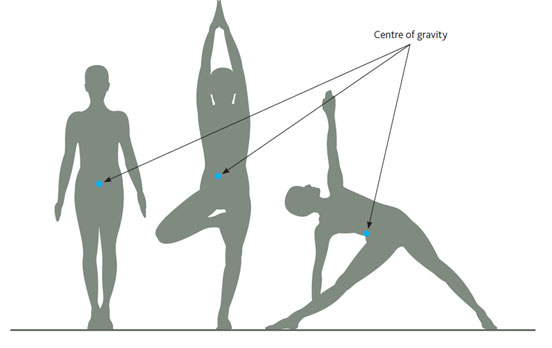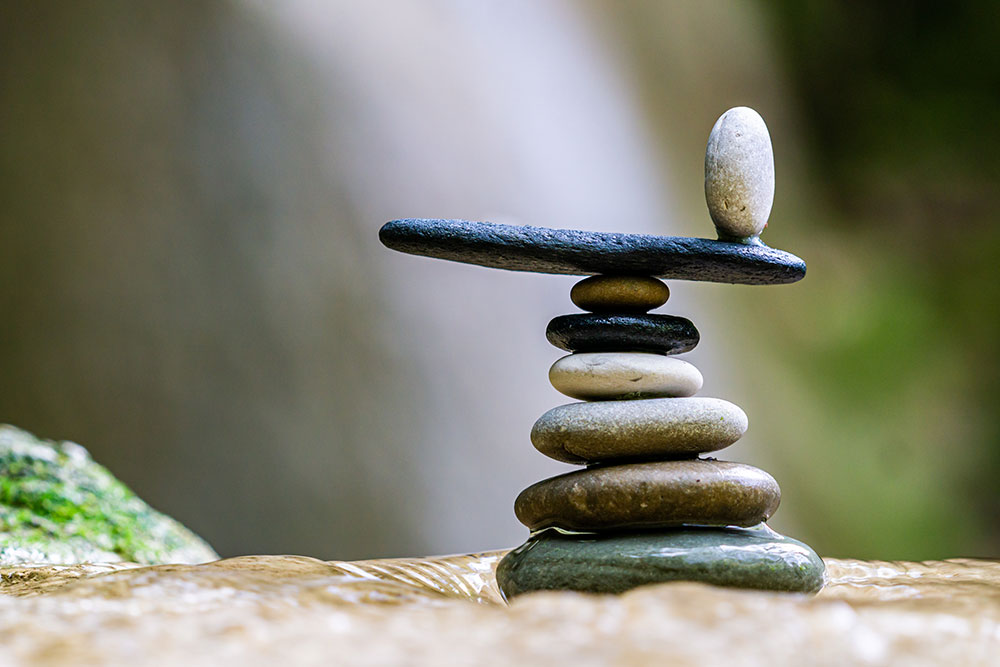Stability versus instability: The human body is unstable and made for movement. Part 1
The human body standing up is fundamentally unstable and is therefore made for movement. We are so unstable because we have a small base; our two feet which are narrow and short in relation to the height and weight of our body. The more unstable the body and the smaller the base of support, the higher the freedom of movement and the easier it is to change intention and direction of movement with ease and speed.
If we compare a human being standing upright to a four-legged animal we notice immediately that the animals’ base of support is much bigger than ours, its base is four legs after all. Moreover, its center of gravity faces the floor. In contrast, the humans’ center of gravity is high up off the floor, situated just below the navel when we are standing up. Although unstable, our uprightness gives us a great advantage over other animals as our main senses are located in the head, high up off the floor, giving us great overview and the ability to react with great speed when necessary.
Our lack of stability also means that the moment a human moves from a standing position to any other position, its center of gravity moves with it and changes location as illustrated in the graph below. The center of gravity is the balance point of the body around which all weight is equal, that is, the center of our weight mass.


To keep our body weight aligned above our feet while moving requires a lot of mobility in our torso, spine, and limbs. This act of compensation happens naturally as long as the body is healthy and normally organised. If you want to try this out, stand up and start making a big circle with your pelvis. You will note that the head moves in the opposite direction of the pelvis and that your arms and torso compensate for the change in your alignment so that you remain balanced. If your weight would no longer be balanced above your feet you would fall.
You can experiment with all these principles in the video lesson called: “The Human body: Some principles of movement”. You can also learn about the base of support in sitting, in my video lesson: “Better sitting in 10 minutes”.
As we have seen, human beings by definition are relatively unstable, have a center of gravity far away from the floor and are therefore built for movement. This has been extremely useful for us during the last 5.5 to 6 million years in which we have been walking upright. In standing we can move in any direction very quickly. We can quickly turn around and even change our direction of movement. For a horse to turn around so quickly is not possible. Once it starts moving in one direction it takes it a certain amount of time for it to stop and change its direction. The human however is much more flexible in this aspect. Being upright notably also means that our head is high above the floor and our senses can easily capture what is around us and react to given threats very quickly by changing our direction quickly if required.
(This is all relatively easy and even instinctual when our body is moving with ease and we are flexible. Over time this fluidity may be reduced and we find ourselves hesitating to make certain movements). In today’s world, where many of us sit for many hours a day, things start to change. Firstly, in sitting, our center of gravity is closer to the floor. Secondly, depending on how you are sitting, your mobility is reduced. As you can see in my lesson “better sitting in 10 minutes” in the Video library you will learn that sitting on the forward edge of your chair, and having both feet planted on the floor so that there is a right, or a 90º, angle between your hip-joints, knees and feet is the best way to sit to maximise stability, ease of movement, ease of transition and ease of standing.
Being a lot more unstable than a four-legged animal has its advantages though
Print on biomechanics
https://www.sciencedirect.com/science/article/pii/S1607551X11001835 https://medcraveonline.com/MOJABB/center-of-mass-of-the-human-body-helps-in-analysis-of-balance-and-movement.html
{You may have noticed that when a statute of a standing person is being built, it needs a be connected to a wide and relatively tall base otherwise it will topple over}
